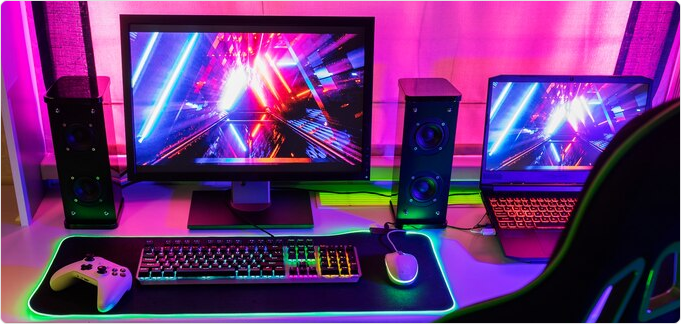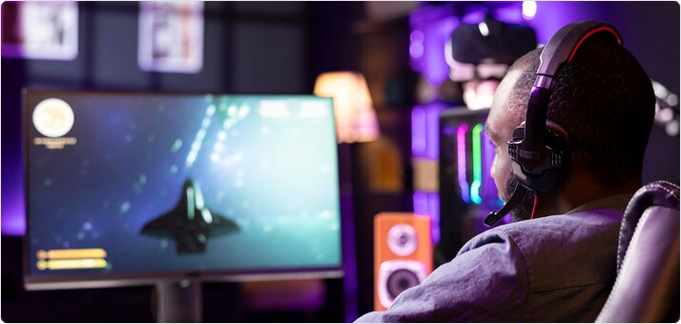Gaming localization is essential for reaching multiple audiences in the video game industry, but it comes with a slew of challenges. It is necessary to understand and fix these common problems to improve the effectiveness of your localization strategy and create an immersive touch with a user’s experience. So, let us guide you in identifying the most crucial issues encountered, how to resolve them, and how game localization services can help you.
What Game Localization Process Consists of: Adapting Your Game for Global Audiences

Game localization is not just about translating game text; it is more about adapting a game for the international market. This encompasses everything from in-game text translation — where every dialogue, tutorial, and user interface must be culturally relevant and easily understood. Then comes the cultural adaptation, where graphics, symbols, and story elements are modified to fit regional sensitivities.
Having native voice actors, besides a soundtrack that fits the culture, is essential in audio and voiceover localization. Language-specific visual and UI tweaks are implemented, while currency, date, and measurement transformations provide comfort. Legal and regulatory compliance aligns the games with the regional regulatory framework. The process also involves localized marketing material, legal documentation, and community outreach. Ensure you run a part of quality assurance testing once all changes are done.
Common Game Localization Challenges And Their Solutions

When you try localizing the game, the process will involve multiple layers of element conversions. From text to multimedia, voice to graphics, everything will be more or less translated to fit the taste of your local target consumer base. So, facing obstacles during the process is inevitable. But worry not, as we have listed the issues and their solutions below to help you tackle challenges effectively:
1. Brevity vs. Clarity Issues
Translating the content correctly without sacrificing clarity is among the major hurdles in game localization. Brevity is especially vital in video games with chat boxes or text fields with limited character counts. However, oversimplification can lead to confusion for players.
The solution is to strike a balance between brevity and clarity. During translation, emphasize the underlying meaning of the text to deliver complete and correct information to the players. Also, avoid the inclusion of fluff words. You can provide your hired game localization services with clear style guides for language and tone to improve transcription quality for all languages.
2. Cultural Sensitive Character Representation
Game characters or storylines that resonate within a particular culture may alienate potential players in other cultures. Also, localization is only effective when culturally relevant to your target player base.
Hire localization consultants to bring out the cultural potential of your game’s content. They can help you identify potential cultural pitfalls and adapt characters and narratives to suit different demographics better. For example, including elements of local customs, symbols, and norms in characters can make them more authentic and give the players something to relate to, creating a more satisfying experience.
3. Code and Font Issues
One of the significant challenges of game localization is code integrity as well as display functionality. Character sets of source languages may not display correctly in target languages and can cause errors in the game.
Hire game localization services with technical specialists who know coding best practices. They’ll ensure no bugs are present and that placeholders are used correctly and maintained during translation. Additionally, ensure that the user interface is flexible for multiple language scripts to enable smooth integration.
4. Coordination and Context Challenges
There are various stakeholders involved (developers, translators, testers, and cultural consultants), and keeping them all in sync is not easy – if the context for translation strings remains vague, it will be left up to the translator to figure out what each string means – reducing the quality of localized content.
Establish a project management plan that outlines roles, responsibilities, and timelines. When localization teams have the context they need, including design documents and the mechanics of the game, they can easily understand the meaning behind each sentence and provide more accurate translations accordingly. Regular communication among cross-functional teams, from briefings to joint sessions, allows all functions to align on the project’s objectives and increase translation accuracy.
5. Customer’s High Expectations
Gamers today have high expectations for localized content. They often anticipate that translated versions match the original’s quality closely. Educate stakeholders about the inherent challenges of the localization process, including the necessity of thorough testing.
Encouraging your customers to allow adequate time for translation and review will lead to a better final product. Implementing regular quality assurance testing, such as conducting beta tests with native speakers, helps catch errors early, ensuring a polished game launch.
6. Adaptation of Slang and Idioms
Each culture has its expressions and slang that do not translate to other languages. Misunderstandings of these terms lead to disconnection between the game narrative and player expectations.
Work with translators who have strong language skills and an understanding of gaming culture and the vernacular to match. This familiarity allows them to adapt slang words and idioms that strike a chord within the target culture. Native-speaking translators give the game an authentic and relatable experience, which can immerse the player perfectly.
7. Length and UI Design Complexity
Another common issue is formatting since the length of your translated text can differ significantly. Inevitably, some languages will need three times the space as the original text, leading to UI overlap or clashing elements.
While designing, expect these issues and leave room for adjustable UI elements. Doing so streamlines your localization process and can save you from unnecessary problems later on. When you allow for text expansion, it means that your game’s layout will remain balanced and functional no matter what target language you translate your content to.
Overcome Gaming Localization Challenges With Expert Guidance
Navigating the complexities of game localization requires a strategic approach to addressing the myriad challenges involved. You can greatly improve the quality and reception of your localized content by implementing solutions that consider linguistic clarity, cultural sensitivity, technical integrity, project management, and customer expectations.
When selecting a partner for game localization services, look no further than Hansem Global. With an expert team dedicated to delivering precise, culturally nuanced translations, we stand out as the premier language service provider in the field. Our commitment to quality and understanding of gaming culture enables us to assist you in creating games that genuinely resonate with international audiences. Reach out to our experts today and unlock your game’s global potential!
FAQs
1. What aspects of a game are localized?
The localization process may include translating in-game text, voiceovers, user interface (UI) elements, graphics, currency, dates, and cultural references. Additionally, localized marketing materials and packaging might also be adapted to match the target audience.
2. What is the difference between translation and localization in gaming?
Translation focuses on converting text from one language to another, while localization adapts the game’s content, graphics, and cultural references for specific regions. Localization ensures that the game resonates with players by addressing cultural nuances and gameplay expectations.
3. What is a localization kit (LocKit), and why is it important?
A localization kit (LocKit) is a set of materials and documentation provided to localization teams to help guide the localization process. It typically includes a style guide, glossary, in-game content, screenshots, cultural references, and technical details. It ensures consistency and helps translators understand the game’s context.






